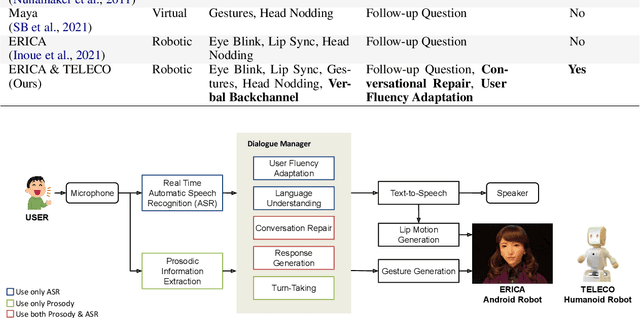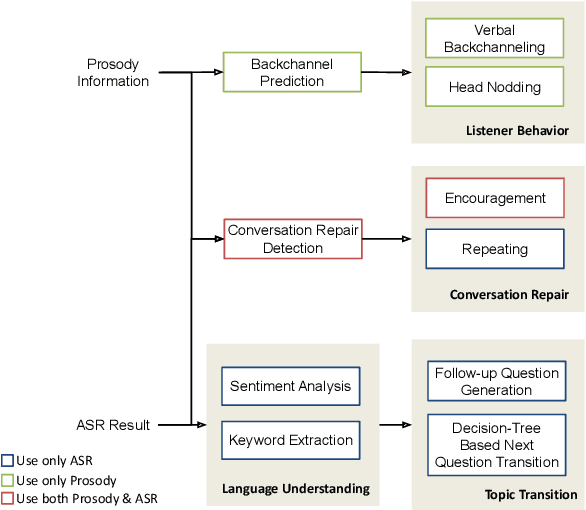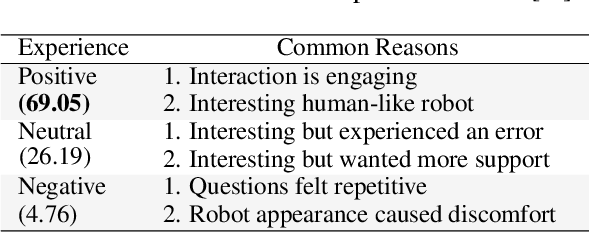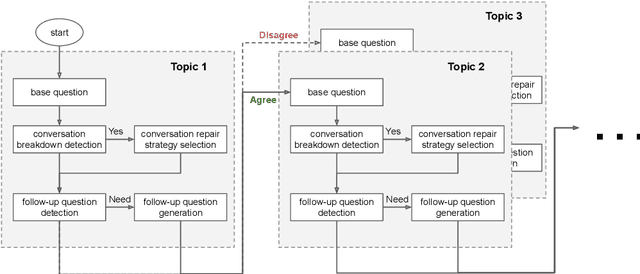Zi Haur Pang
Minority-Aware Satisfaction Estimation in Dialogue Systems via Preference-Adaptive Reinforcement Learning
Nov 07, 2025Abstract:User satisfaction in dialogue systems is inherently subjective. When the same response strategy is applied across users, minority users may assign different satisfaction ratings than majority users due to variations in individual intents and preferences. However, existing alignment methods typically train one-size-fits-all models that aim for broad consensus, often overlooking minority perspectives and user-specific adaptation. We propose a unified framework that models both individual- and group-level preferences for user satisfaction estimation. First, we introduce Chain-of-Personalized-Reasoning (CoPeR) to capture individual preferences through interpretable reasoning chains. Second, we propose an expectation-maximization-based Majority-Minority Preference-Aware Clustering (M2PC) algorithm that discovers distinct user groups in an unsupervised manner to learn group-level preferences. Finally, we integrate these components into a preference-adaptive reinforcement learning framework (PAda-PPO) that jointly optimizes alignment with both individual and group preferences. Experiments on the Emotional Support Conversation dataset demonstrate consistent improvements in user satisfaction estimation, particularly for underrepresented user groups.
Does the Appearance of Autonomous Conversational Robots Affect User Spoken Behaviors in Real-World Conference Interactions?
Mar 17, 2025Abstract:We investigate the impact of robot appearance on users' spoken behavior during real-world interactions by comparing a human-like android, ERICA, with a less anthropomorphic humanoid, TELECO. Analyzing data from 42 participants at SIGDIAL 2024, we extracted linguistic features such as disfluencies and syntactic complexity from conversation transcripts. The results showed moderate effect sizes, suggesting that participants produced fewer disfluencies and employed more complex syntax when interacting with ERICA. Further analysis involving training classification models like Na\"ive Bayes, which achieved an F1-score of 71.60\%, and conducting feature importance analysis, highlighted the significant role of disfluencies and syntactic complexity in interactions with robots of varying human-like appearances. Discussing these findings within the frameworks of cognitive load and Communication Accommodation Theory, we conclude that designing robots to elicit more structured and fluent user speech can enhance their communicative alignment with humans.
Human-Like Embodied AI Interviewer: Employing Android ERICA in Real International Conference
Dec 13, 2024



Abstract:This paper introduces the human-like embodied AI interviewer which integrates android robots equipped with advanced conversational capabilities, including attentive listening, conversational repairs, and user fluency adaptation. Moreover, it can analyze and present results post-interview. We conducted a real-world case study at SIGDIAL 2024 with 42 participants, of whom 69% reported positive experiences. This study demonstrated the system's effectiveness in conducting interviews just like a human and marked the first employment of such a system at an international conference. The demonstration video is available at https://youtu.be/jCuw9g99KuE.
Acknowledgment of Emotional States: Generating Validating Responses for Empathetic Dialogue
Feb 20, 2024



Abstract:In the realm of human-AI dialogue, the facilitation of empathetic responses is important. Validation is one of the key communication techniques in psychology, which entails recognizing, understanding, and acknowledging others' emotional states, thoughts, and actions. This study introduces the first framework designed to engender empathetic dialogue with validating responses. Our approach incorporates a tripartite module system: 1) validation timing detection, 2) users' emotional state identification, and 3) validating response generation. Utilizing Japanese EmpatheticDialogues dataset - a textual-based dialogue dataset consisting of 8 emotional categories from Plutchik's wheel of emotions - the Task Adaptive Pre-Training (TAPT) BERT-based model outperforms both random baseline and the ChatGPT performance, in term of F1-score, in all modules. Further validation of our model's efficacy is confirmed in its application to the TUT Emotional Storytelling Corpus (TESC), a speech-based dialogue dataset, by surpassing both random baseline and the ChatGPT. This consistent performance across both textual and speech-based dialogues underscores the effectiveness of our framework in fostering empathetic human-AI communication.
 Add to Chrome
Add to Chrome Add to Firefox
Add to Firefox Add to Edge
Add to Edge